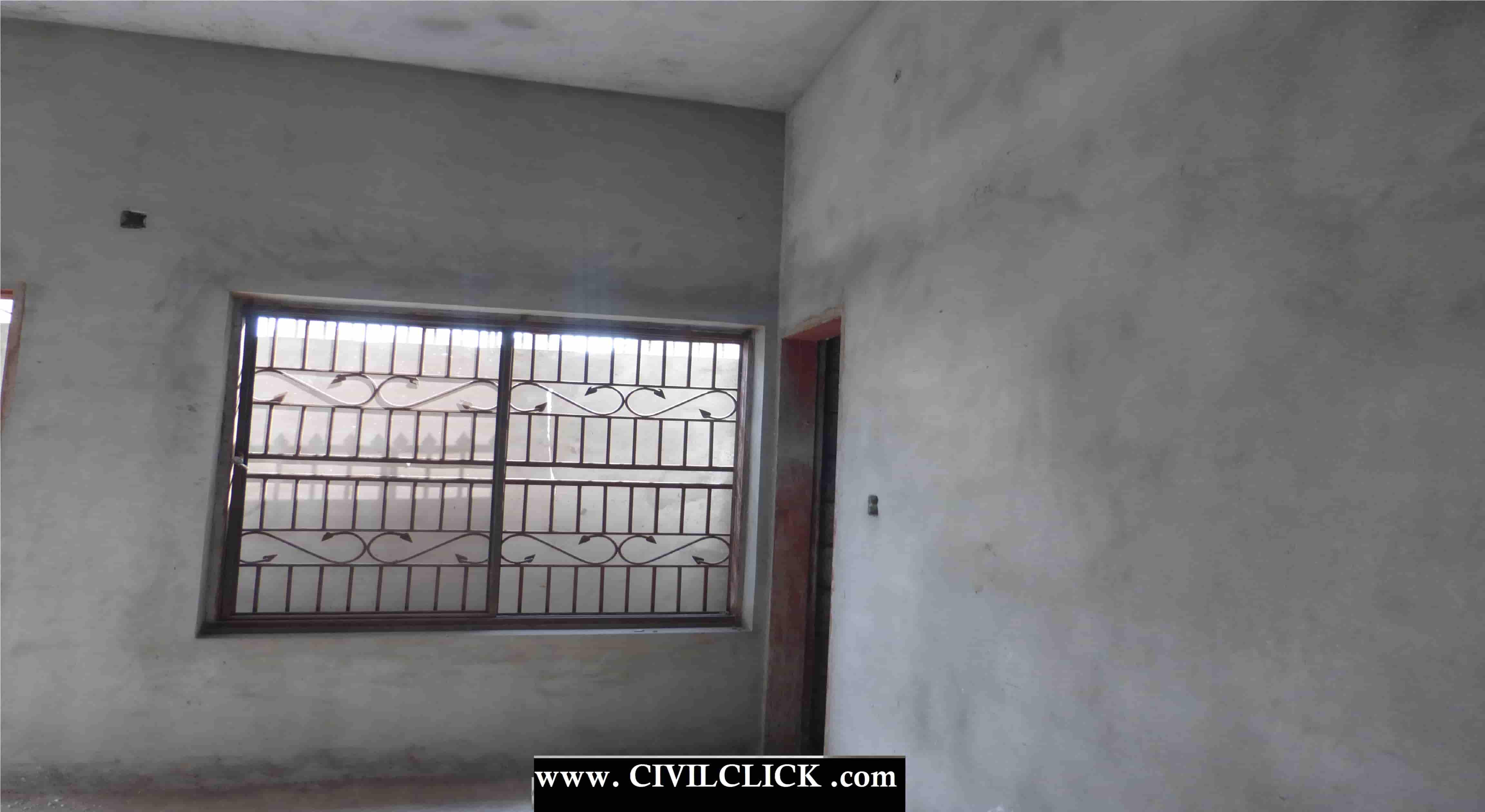How to Calculate Quantity of Plaster?
The quantity of plaster calculation is very easy just needs your concentration. The following points you always remember at the site when you need to calculate the plaster quantity means (water, cement, and sand).
- For wall plaster generally ratio we use = 1: 6 (1 part of cement and 6 part of sand).
- For Roof plaster, mainly ratio we use = is 1: 4 (1 part of cement and 4 part of sand).
- The thickness of plaster is between = 12 mm to 15 mm.
- Always use good quality cement (Different grades of cement) and good quality sand.
- Always use a measuring box for measuring the quantity of sand and cement at the site.
For your better understanding let’s solve this example and find the results.
EXAMPLE:
Suppose we have an Area of the 200-meter square (Length, Width) over that area we need to perform plaster and the ratio of cement and sand we are using 1: 4 and the thickness of the dressing will be 13 mm.
1. So calculate the required quantity of water, Cement and Sand used in this plaster.
Given Data:
Plaster Thickness = 13 mm = 0.013 m <Remarks 1 m = 1000 mm>
Area = 200 meter square
Ratio = 1: 4
Quantity =?

Solution:
First, we calculate the volume of the plaster (Wet volume) and the volume is wet. Wet volume (water+wastage+bulking of sand) then we convert this volume into the dry volume. After calculating the volume we just find the quantity of cement, Sand, and water required in this plasterwork according to these given data.
The volume of cement mortar required = (Area of Plaster x Thickness)
Volume of cement mortar required = 200 x 0.013
Volume of cement mortar required = 2.6 (wet volume)
So 2.6-meter cube is a wet volume of cement mortar (with water). But we need dry volume to get the dry volume to consider 20% bulking of the sand and 15% Wastage of the sand at the site.
=2.6 meter cube x (1 + 0.2 + 0.15) <Remarks 20/100 % = 0.20 or just multiply by 1.35 >
=3.51 (dry Volume).
CEMENT REQUIRED:
Cement: = (Dry volume x Ratio x Density of cement)/Sum of ratio
Cement : = (3.51 x 1 x 1440)/5 < Density of cement is 1440 kg/meter cube >
Cement : = 1010.88 kg /50 < 1 bag of cement is 50 kg >
Cement : = 20.21 bags
SAND REQUIRED:
Sand : = (Dry volume x Ratio x 35.3147)/Sum of ratio
Sand : = (3.51 x 4 x 35.3147)/5 < 1 meter cube = 35.3147 cubic feet >
Sand : = 99.16 Cubic feet.
WATER REQUIRED:
Water: = (Weight of cement x water-cement ratio)
Water: = 1010.88 x 0.5 < 0.5 kg water every 1 kg of Cement >
Water: = 505.4 kg or 505.4 Litters.
CONCLUSION:
Cement := 1010.88 kg
Sand: = 99.16 cubic feet
Water: = 505.4 Litters
So these quantities are going to use in a 13 mm thick plaster.
Note: The water-cement ratio of 0.5 is not fixed it depends on which type of plaster is going to do or the compressive strength we get after fixing the water-cement ratio in 1: a 4 mix.
The calculation may vary under different conditions. We added must wastage in that area which is not paved. In the paved area, the sand, cement, and gravel wastage may be less compared to the unpaved area.
The Quantity of plaster calculation is based on experience and some thumb rules. The ground reality condition may be a little bit changed.
WATCH THIS ARTICLE VIDEO:
You can watch this video for your better understanding. The video is in Hindi or Urdu. The dimensions are changed but the method is the same. You can all visit this channel the link to this channel was below.
Visit this Channel on YouTube: F&U-FORYOU
Add a Comment
Cancel reply
You must be logged in to post a comment.

thank u for the everything….√ bro….
aⅼways i used to read smaller articleѕ tһat
as well clear their motive, and that is also happening with this piece of wrіting which I am rеading at this
place.
Excellent, thanks